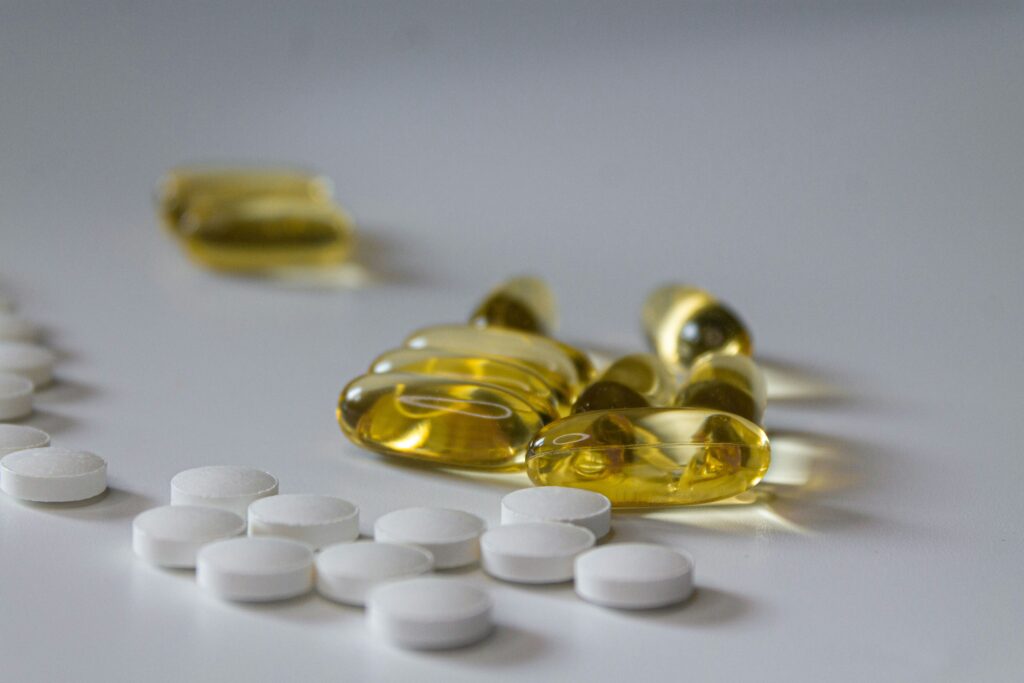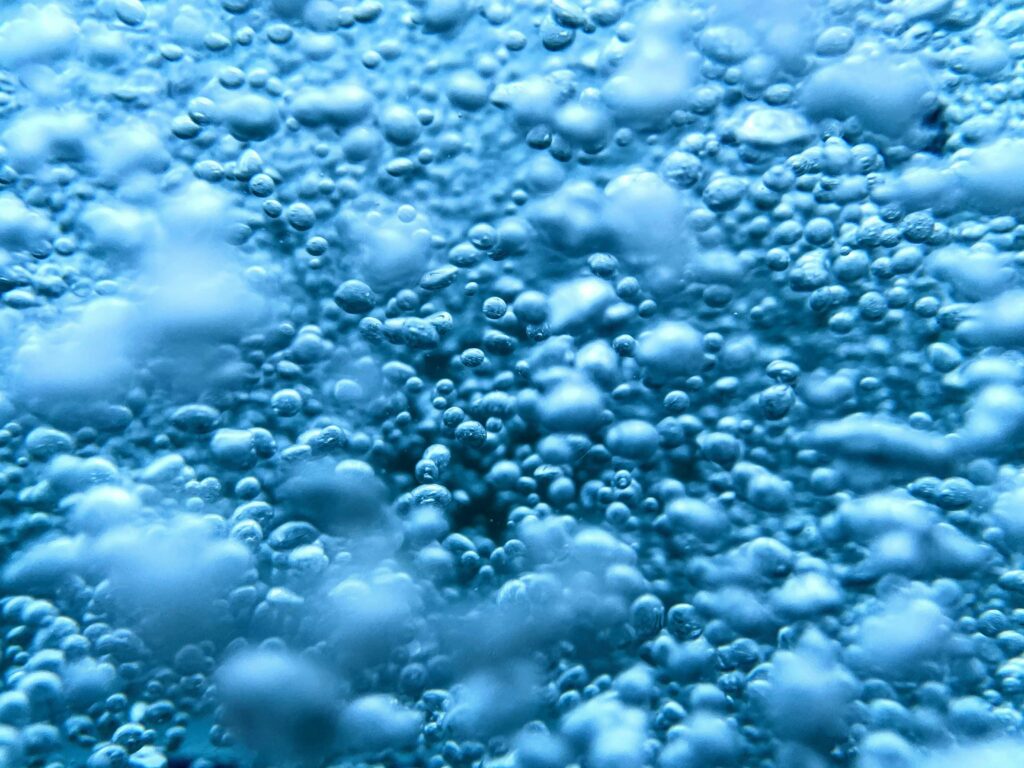Curcumin Supplements for Muscle Recovery
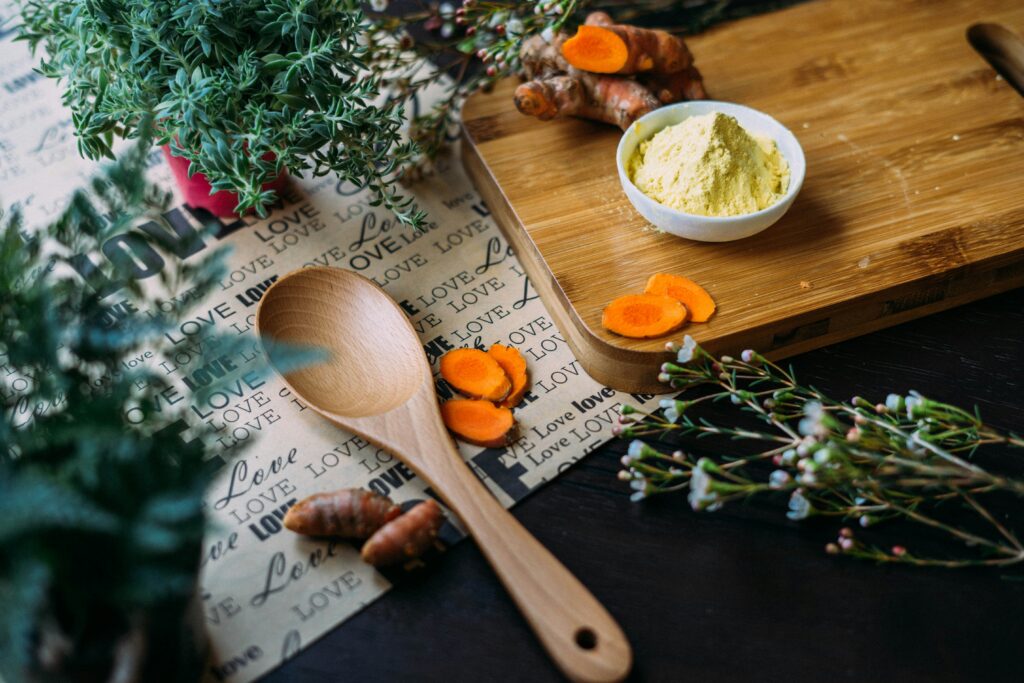
This golden spice, derived from turmeric, has been used for centuries in traditional medicine, but only recently have we begun to understand its potential benefits for athletes and fitness enthusiasts. Curcumin, the active compound in turmeric, has powerful anti-inflammatory and antioxidant properties that can significantly impact muscle recovery. In this comprehensive guide, we’ll look at the science behind curcumin and how it can potentially alter your post-workout recovery routine.
The Science of Curcumin and Muscle Recovery
Curcumin primarily works its magic through its anti-inflammatory effects. When we exercise, especially at high intensities, we create microscopic damage to our muscle fibers. This damage triggers an inflammatory response, which is a natural part of the healing process.
However, excessive inflammation can lead to prolonged soreness and delayed recovery. This is where curcumin comes in. Research has shown that curcumin can help modulate the inflammatory response, potentially reducing the severity and duration of exercise-induced muscle damage. A study published in the European Journal of Applied Physiology found that curcumin supplementation significantly reduced muscle damage and improved recovery of muscle performance after eccentric exercise.
But curcumin’s benefits extend beyond inflammation. Its antioxidant properties also play a crucial role in combating oxidative stress, another factor that can impair muscle recovery. By neutralizing free radicals produced during intense exercise, curcumin may help protect muscle cells from further damage and support faster regeneration.
The Mechanisms of Curcumin’s Action
To truly appreciate curcumin’s potential, it’s essential to understand the specific mechanisms through which it operates:
- NF-κB Inhibition: Curcumin has been shown to inhibit the activation of nuclear factor kappa B (NF-κB), a key regulator of the inflammatory response. By dampening NF-κB activation, curcumin can help reduce the production of pro-inflammatory cytokines.
- COX-2 Suppression: Curcumin also inhibits cyclooxygenase-2 (COX-2), an enzyme responsible for producing inflammatory prostaglandins. This action is similar to that of non-steroidal anti-inflammatory drugs (NSAIDs), but without the potential side effects associated with long-term NSAID use.
- Antioxidant Activity: Curcumin acts as a powerful antioxidant, neutralizing free radicals and reducing oxidative stress. This protection is particularly important during intense exercise when free radical production is elevated.
- Muscle Protein Synthesis: Some studies suggest that curcumin may enhance muscle protein synthesis, potentially supporting muscle growth and repair.
- Mitochondrial Function: Curcumin has been shown to improve mitochondrial function, which could lead to better energy production and faster recovery.
Practical Applications of Curcumin for Athletes
Now that we understand the science, let’s explore how to incorporate curcumin into your recovery routine effectively. The most common method is through oral supplements, typically in capsule form. However, curcumin on its own has poor bioavailability, meaning your body doesn’t absorb it very well.
To overcome this challenge, many curcumin supplements include extra compounds to enhance absorption. One of the most popular is piperine, a component of black pepper that can increase curcumin absorption by up to 2000%. Look for supplements that contain BioPerine, a patented form of piperine, or other absorption enhancers like liposomal formulations.
Timing is also crucial when it comes to curcumin supplementation. Some studies suggest taking curcumin before exercise can help reduce muscle damage, while others recommend post-workout supplementation for optimal recovery. Many fitness enthusiasts find success with a split dosage, taking half before a workout and half after.
Dosage and Timing Strategies
Here are some dosage and timing strategies to consider:
- Pre-workout: Take 500mg of curcumin with enhanced bioavailability about 1-2 hours before your workout.
- Post-workout: Take another 500mg immediately after your workout or with your post-workout meal.
- Daily maintenance: On rest days, take 500-1000mg of curcumin, split into two doses with meals.
- Loading phase: Some athletes find benefit in a loading phase of 1500-2000mg daily for the first week, before dropping to a maintenance dose.
- Cycling: To prevent tolerance, consider cycling your curcumin use, such as 3 weeks on, 1 week off.
These are general guidelines, and personal responses may vary. It’s always best to start with a lower dose and gradually increase as needed while monitoring your body’s response.
Overcoming Challenges with Curcumin Supplementation
While curcumin shows promise for muscle recovery, it’s not without its challenges. One of the biggest hurdles is finding the right dosage. Research has used a wide range of doses, from 500mg to 2000mg per day, making it difficult to determine the optimal amount. Starting with a lower dose is often practical, beginning with around 500mg per day, and gradually increasing it while monitoring your body’s response. Keep in mind that more isn’t always better – higher doses may lead to gastrointestinal discomfort in some people.
Another challenge is the variability in supplement quality. The curcumin market is largely unregulated, which means not all products are created equal. Look for supplements that have been third-party tested for purity and potency, and choose reputable brands with transparent labeling.
Choosing the Right Curcumin Supplement
When selecting a curcumin supplement, consider the following factors:
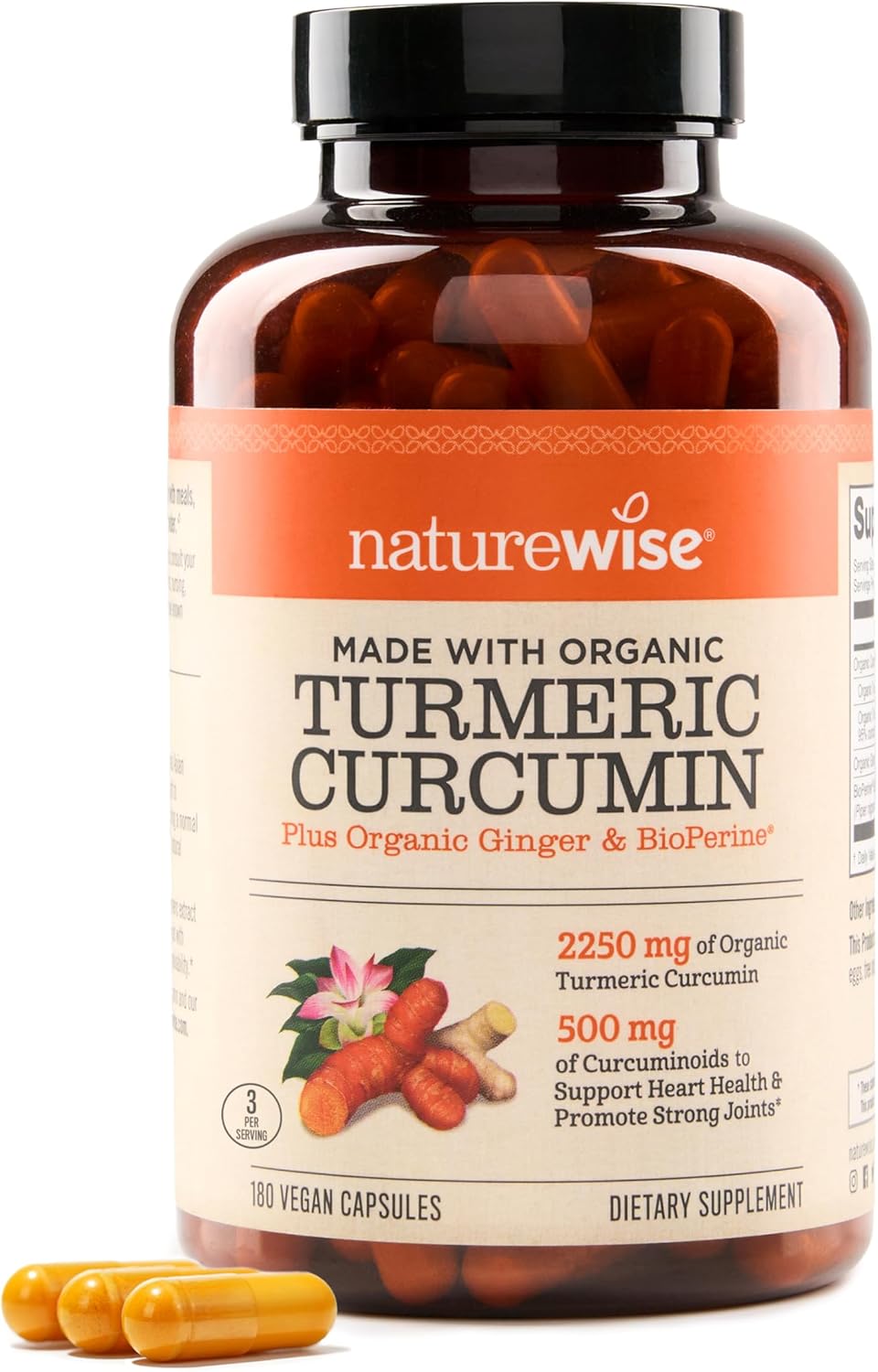
- Bioavailability enhancers: Look for products that include piperine, liposomal formulations, or other absorption-boosting technologies.
- Standardized extracts: Choose supplements that contain standardized curcumin extracts, ensuring a consistent amount of active compounds.
- Third-party testing: Opt for brands that undergo third-party testing for purity and potency.
- Additional ingredients: Some formulations include other anti-inflammatory compounds like ginger or boswellia, which may provide synergistic effects.
- Form: Consider whether you prefer capsules, powders, or liquid formulations.
NatureWise Curcumin Turmeric & BioPerine Black Pepper Extract for Advanced Absorption is one highly rated option to try.
Implementing Curcumin into Your Recovery Routine
Ready to give curcumin a try? Here’s a step-by-step guide to incorporating it into your recovery routine:
- Choose a high-quality curcumin supplement with enhanced bioavailability.
- Start with a lower dose (around 500mg) and gradually increase if needed.
- Consider splitting your dose between pre- and post-workout.
- Be consistent – take your supplement daily for at least 4-6 weeks to assess its effects.
- Monitor your recovery, including muscle soreness, fatigue, and performance in subsequent workouts.
- Adjust your dosage or timing as needed based on your results.
Curcumin is just one piece of the recovery puzzle. It works best when combined with other proven recovery strategies like proper nutrition, hydration, and adequate sleep.
Synergistic Recovery Strategies
To maximize the benefits of curcumin supplementation, consider incorporating these complementary recovery techniques:
- Proper hydration: Aim for at least 8-10 glasses of water per day, more if you’re training intensely.
- Balanced nutrition: Focus on a diet rich in lean proteins, complex carbohydrates, and healthy fats to support muscle recovery and growth.
- Adequate sleep: Aim for 7-9 hours of quality sleep per night to allow your body to repair and regenerate.
- Active recovery: Incorporate light activities like walking or swimming on rest days to promote blood flow and reduce muscle stiffness.
- Foam rolling and stretching: Regular self-myofascial release and stretching can help reduce muscle tension and improve flexibility.
- Cold therapy: Consider ice baths or cryotherapy to reduce inflammation and soreness after intense workouts.
- Compression garments: Wearing compression clothing during and after workouts may help reduce muscle damage and speed up recovery.
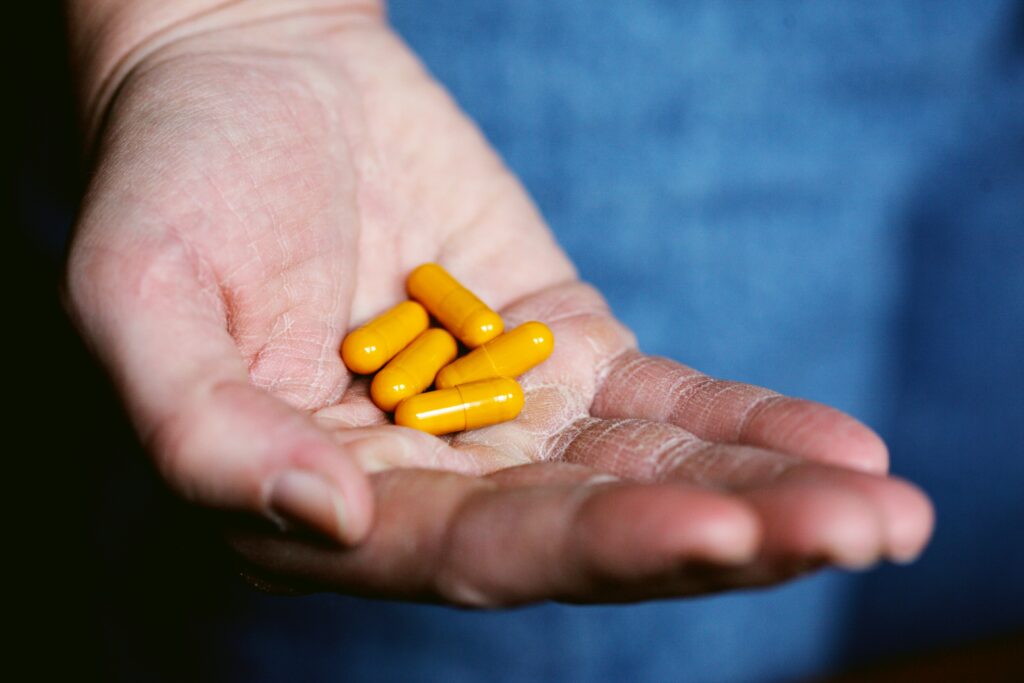
Potential Problems to Watch Out For
**While curcumin is generally safe for most people, there are a few potential side effects to be aware of. Some people may experience digestive issues like nausea or diarrhea, especially at higher doses. If you experience any adverse effects, reduce your dosage or stop use and talk to a healthcare professional.
**Curcumin can also interact with certain medications, particularly blood thinners and diabetes medications. If you’re taking any prescription drugs, it’s crucial to speak with your doctor before starting curcumin supplementation.
Monitoring Your Body’s Response
To confirm you’re reaping the benefits of curcumin without experiencing negative side effects, pay close attention to your body’s response:
- Keep a recovery journal: Track your muscle soreness, energy levels, and overall recovery after workouts.
- Monitor your digestion: Note any changes in your digestive health, such as bloating or changes in bowel movements.
- Watch for allergic reactions: Although rare, some people may be allergic to curcumin. Look out for signs like rashes, itching, or difficulty breathing.
- Check your performance: Monitor your strength, endurance, and overall performance in subsequent workouts to gauge the effectiveness of curcumin supplementation.
- Be patient: Remember that it may take several weeks to notice significant improvements in your recovery.
Adapting Curcumin Use for Different Training Scenarios
The beauty of curcumin supplementation is its versatility. Whether you’re an endurance athlete, a strength trainer, or somewhere in between, curcumin can be adapted to suit your needs. For endurance athletes, such as long-distance runners, curcumin’s anti-inflammatory properties may be particularly useful for reducing muscle soreness during multi-day events or high-volume training periods. Strength athletes, such as powerlifters, on the other hand, might focus on curcumin’s potential to enhance muscle protein synthesisand support muscle growth. Experiment with different dosing strategies based on your training schedule. For example, you might increase your curcumin intake during particularly intense training blocks or when tapering for a big event.
Curcumin for Endurance Athletes
If you’re an endurance athlete, consider these strategies:
- Pre-race loading: Increase your curcumin intake in the week leading up to a big event to prime your body for reduced inflammation.
- During multi-day events: Take curcumin between stages to support recovery and reduce added inflammation.
- Post-long run recovery: Use a higher dose of curcumin after particularly long or intense training sessions.
- Chronic use for high-volume training: Maintain a consistent, moderate dose of curcumin throughout high-volume training periods to support overall recovery.
Curcumin for Strength Athletes
Strength athletes can benefit from curcumin in the following ways:
- Post-workout recovery: Take curcumin immediately after strength training sessions to support muscle repair and reduce soreness.
- Pre-workout for joint health: Consider a small dose before workouts to support joint health during heavy lifting.
- Support for bulking phases: Increase curcumin intake during high-volume, muscle-building phases to manage inflammation from increased training load.
- Recovery during deload weeks: Use curcumin to enhance recovery during planned deload or rest periods.
Building on the Basics: Advanced Curcumin Strategies
As you become more familiar with curcumin supplementation, you can explore more advanced strategies to maximize its benefits. One approach is to mix curcumin with other natural anti-inflammatory compoundslike omega-3 fatty acids or ginger for a synergistic effect. Another advanced technique is to use topical curcumin preparations in addition to oral supplements. Some athletes swear by curcumin-infused creams or gels applied directly to sore muscles for localized relief.
Synergistic Supplement Stacks
Consider these supplement combinations to enhance curcumin’s effects:
- Curcumin + Omega-3s: This combination may provide enhanced anti-inflammatory effects and support overall health. An optimized, highly bioavailable option is Nordic Naturals Omega Curcumin.

- Curcumin + Ginger: Ginger complements curcumin’s anti-inflammatory properties and may help with digestion. A popular example is Nature’s Nutrition Turmeric Curcumin and Ginger with Bioperine.

- Curcumin + Boswellia: This combination has shown promise in reducing joint pain and inflammation. Vimerson Health Turmeric Curcumin Supplement with 65% Boswellia Extract is also enhanced with Bioperine.

- Curcumin + Quercetin: Quercetin may enhance curcumin’s absorption and provide extra antioxidant benefits. Vimerson Health offers Quercetin, Turmeric/Curcumin and Bromelain supplements. This product is made in the USA with globally-sourced ingredients, in a cGMP-certified & NSF-certified facility.
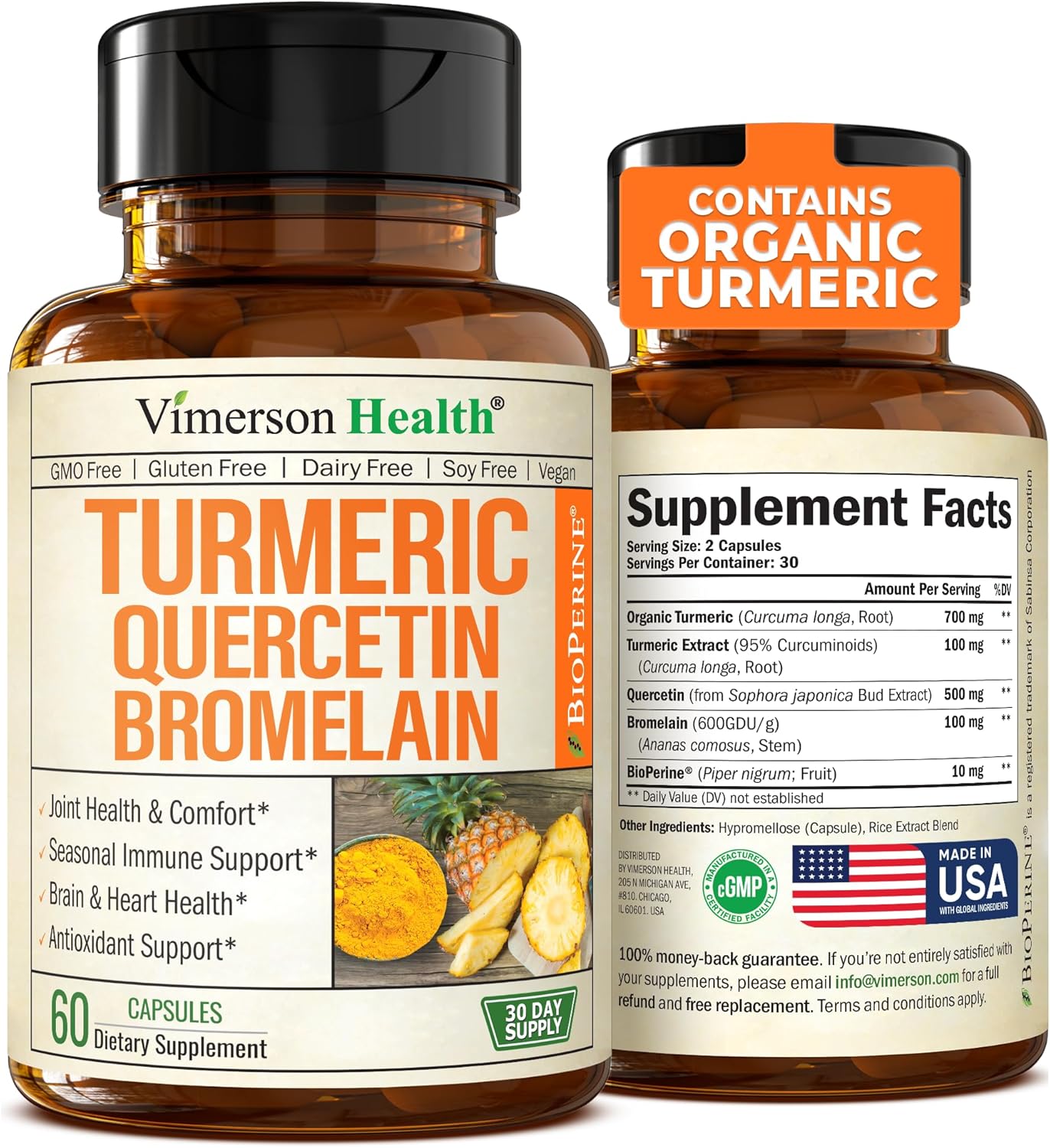
- Curcumin + Resveratrol: This combination may offer enhanced protection against oxidative stress. NAOMI Turmeric Curcumin Resveratrol Supplement is an affordable FDA-regulated brand.

Topical Curcumin Applications
For targeted relief, try these topical curcumin strategies:
- DIY curcumin paste: Mix curcumin powder with coconut oil to create a soothing paste for sore muscles.
- Curcumin-infused massage oil: Add a few drops of curcumin essential oil to your favorite massage oil for post-workout rubdowns. One to try is SIVA Organics Turmeric Essential Oil for Body Massage.

- Commercial curcumin creams: Look for specially formulated topical products containing curcumin for localized application. Vicco Turmeric Skin Cream with Sandalwood Oil is a good option to try.
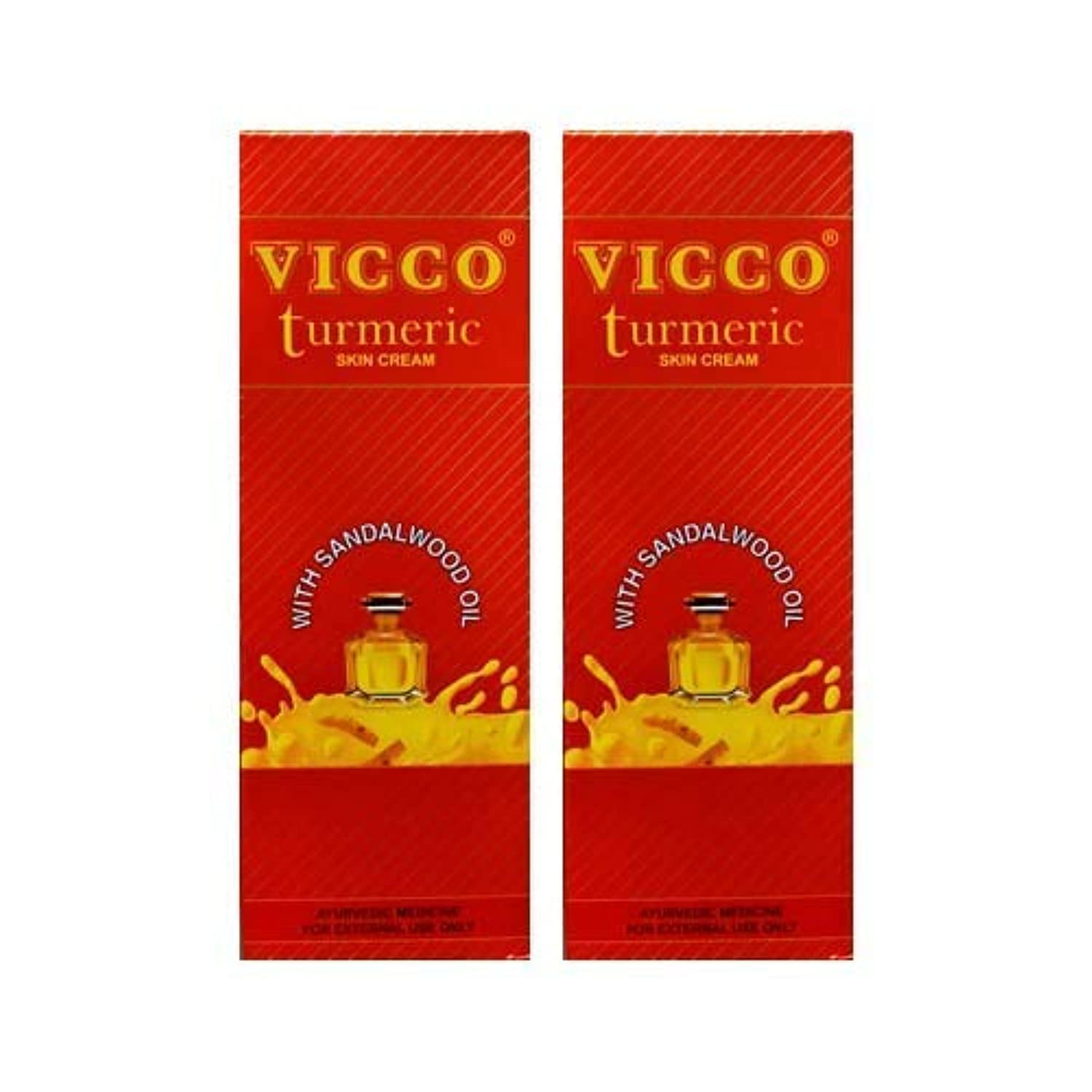
- Curcumin patches: Some companies offer transdermal curcumin patches for sustained release over time. Live To Shine Turmeric Curcumin Topical Patches is a good overall pick.
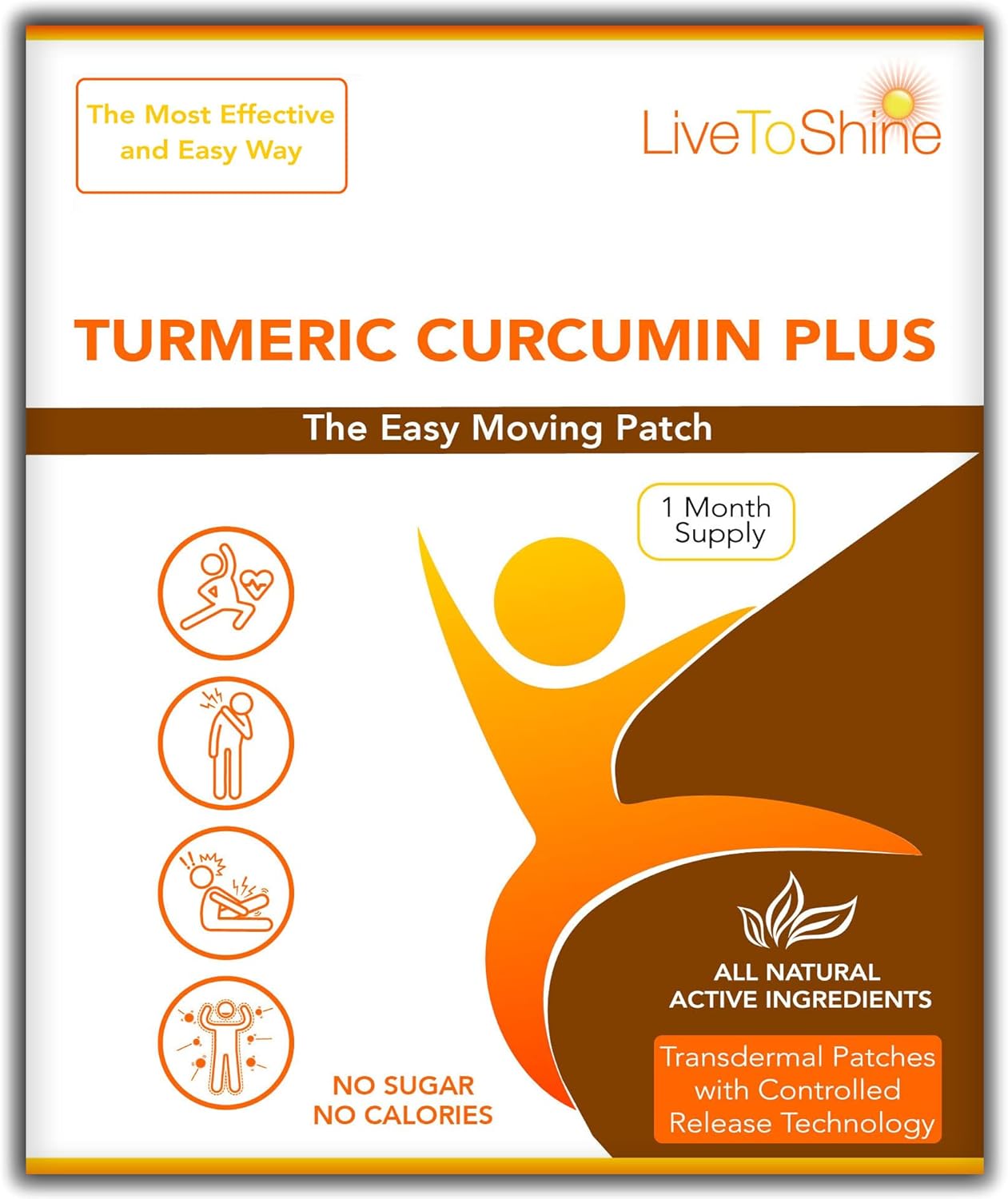
Exercises to Enhance Curcumin’s Effects
While curcumin can support muscle recovery, it’s most effective when combined with proper recovery techniques. Try incorporating these exercises and practices to complement your curcumin supplementation:
- Gentle stretching or yoga: Improve circulation and reduce muscle tension with low-intensity stretching or yoga sessions.
- Foam rolling or self-massage: Target specific areas of soreness using foam rollers or massage tools to break up adhesions and improve blood flow.
- Light, active recovery workouts: Engage in low-intensity activities like swimming or cycling to promote blood flow without causing extra muscle damage.
- Contrast therapy: Alternate between hot and cold treatments (like hot showers and cold packs) to reduce inflammation and improve circulation.
- Progressive muscle relaxation: Practice tensing and relaxing different muscle groups to promote overall relaxation and reduce muscle tension.
- Mobility work: Incorporate dynamic mobility exercises to maintain joint health and flexibility.
- Breathing exercises: Use deep breathing techniques to promote relaxation and oxygenation of muscles.
By combining these practices with curcumin supplementation, you’ll create a comprehensive recovery strategy that can help you bounce back faster and stronger from even the toughest workouts.
People Also Asked
What is the best time to take curcumin for muscle recovery?
The optimal time to take curcumin for muscle recovery is typically split between pre- and post-workout. Taking 500mg about 1-2 hours before exercise may help reduce inflammation during your workout, while another 500mg immediately after or with your post-workout meal can support recovery processes.
How long does it take for curcumin to work for inflammation?
The effects of curcumin on inflammation can vary, but many people report noticing benefits within 4-8 weeks of consistent use. Some may experience improvements sooner, especially when using highly bioavailable formulations.
Can curcumin help with joint pain from weightlifting?
Yes, curcumin has shown potential in reducing joint pain and inflammation. Its anti-inflammatory properties may help reduce discomfort associated with weightlifting and other high-impact exercises.
Is it safe to take curcumin daily for muscle recovery?
For most people, daily curcumin supplementation is safe when taken at recommended doses. However, it’s always best to talk to a healthcare professional before starting any new supplement regimen, especially if you have pre-existing health conditions or are taking medications.
How much curcumin should I take for muscle soreness?
The effective dose of curcumin for muscle soreness can vary, but most studies use doses ranging from 500mg to 2000mg per day. Start with a lower dose of 500mg and gradually increase if needed while monitoring your body’s response.
Can curcumin replace NSAIDs for post-workout pain relief?
While curcumin has anti-inflammatory properties similar to NSAIDs, it’s not a direct replacement for medication. Some athletes find that curcumin helps reduce their reliance on NSAIDs, but always talk to a healthcare professional before making changes to your pain management strategy.
Does curcumin affect muscle growth?
Some research suggests that curcumin may support muscle growth by enhancing muscle protein synthesis and reducing inflammation. However, more studies are needed to fully understand its impact on muscle hypertrophy.
Are there any foods that enhance curcumin absorption?
Black pepper, or more specifically its active compound piperine, significantly enhances curcumin absorption. Consuming curcumin with healthy fats like coconut oil or avocado may also improve its absorption because of curcumin’s fat-soluble nature.
Can I take curcumin with other supplements?
Curcumin can generally be safely combined with other supplements. However, it’s important to be aware of potential interactions, especially with blood-thinning supplements or medications.
Always talk to a healthcare professional when combining multiple supplements.
How does curcumin compare to other natural anti-inflammatories for recovery?
Curcumin is considered one of the more potent natural anti-inflammatories, often compared favorably to options like ginger or omega-3 fatty acids. Its effectiveness can vary between individuals, and some people may find a combination of natural anti-inflammatories works best for their recovery needs.
Key Takeaways
- Curcumin, the active compound in turmeric, has powerful anti-inflammatory and antioxidant properties that can significantly impact muscle recovery.
- Look for curcumin supplements with enhanced bioavailability, such as those containing piperine or using liposomal formulations.
- Start with a lower dose of around 500mg per day and gradually increase while monitoring your body’s response.
- Consider splitting your curcumin dose between pre- and post-workout for optimal benefits.
- Combine curcumin supplementation with other proven recovery strategies like proper nutrition, hydration, and adequate sleep for best results.
- Be aware of potential side effects and interactions, especially if you’re taking other medications or have pre-existing health conditions.
- Experiment with different dosing strategies based on your training schedule and goals, adapting your approach for endurance or strength-focused activities.
- Consider advanced techniques like combining curcumin with other anti-inflammatory compounds or using topical applications for targeted relief.
- Incorporate complementary recovery exercises and techniques to enhance curcumin’s effects on muscle recovery.
- Be patient and consistent with your curcumin supplementation, as it may take several weeks to notice significant improvements in your recovery.
To maximize your fitness recovery efforts, explore Recovery Essentials Hub for additional workout recovery tips, practices, and products curated to help you achieve peak performance. Investing in high-quality recovery routines can make the difference between mediocre workouts and reaching incredible fitness gains.
This post contains affiliate links. If you click on one and make a purchase, I may earn a commission at no additional cost to you. Rest assured, I only recommend products or services I believe will provide value to my readers.
